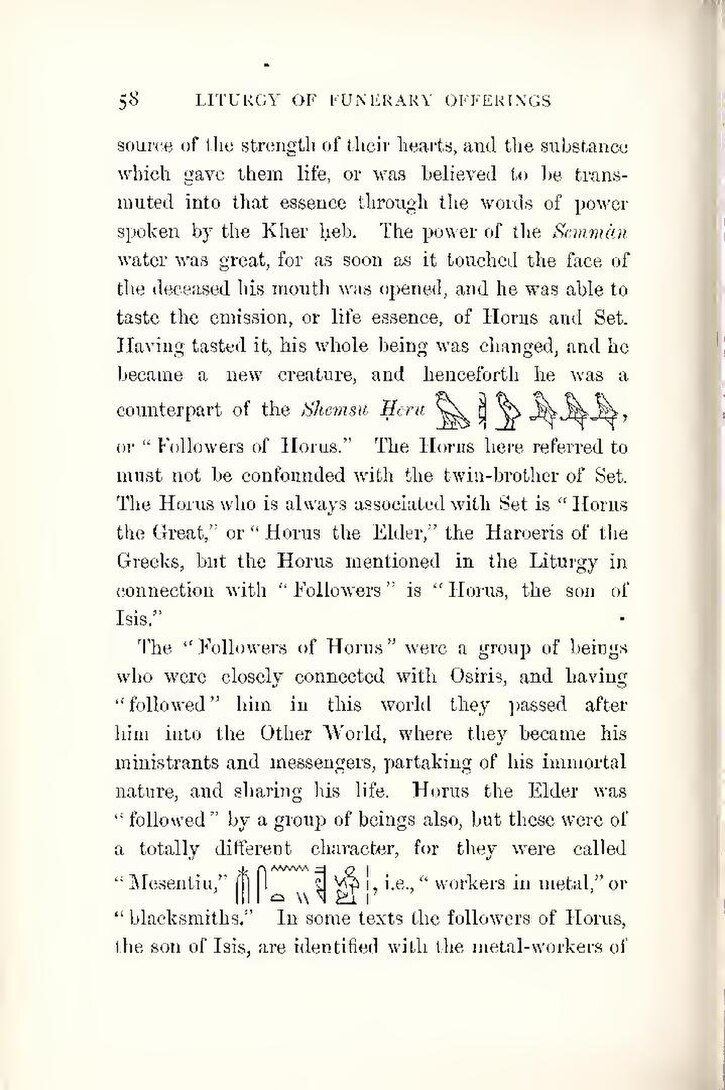source of the strength of their hearts, and the substance which gave them life, or was believed to be transmuted into that essence through the words of power spoken by the Kher ḥeb. The power of the Semmȧn water was great, for as soon as it touched the face of the deceased his mouth was opened, and he was able to taste the emission, or life essence, of Horus and Set. Having tasted it, his whole being was changed, and he became a new creature, and henceforth he was a counterpart of the Shemsu Ḥeru
| |
, or “Followers of Horus.” The Horus here referred to must not be confounded with the twin-brother of Set. The Horus who is always associated with Set is “Horus the Great,” or “Horus the Elder,” the Haroeris of the Greeks, but the Horus mentioned in the Liturgy in connection with “Followers” is “Horus, the son of Isis.” The “Followers of Horus” were a group of beings who were closely connected with Osiris, and having “followed” him in this world they passed after him into the Other World, where they became his ministrants and messengers, partaking of his immortal nature, and sharing his life. Horus the Elder was “followed” by a group of beings also, but these were of a totally different character, for they were called "Mesentiu,"
| |
, i.e., "workers in metal," or "blacksmiths." In some texts the followers of Horus, the son of Isis, are identified with the metal-workers of
